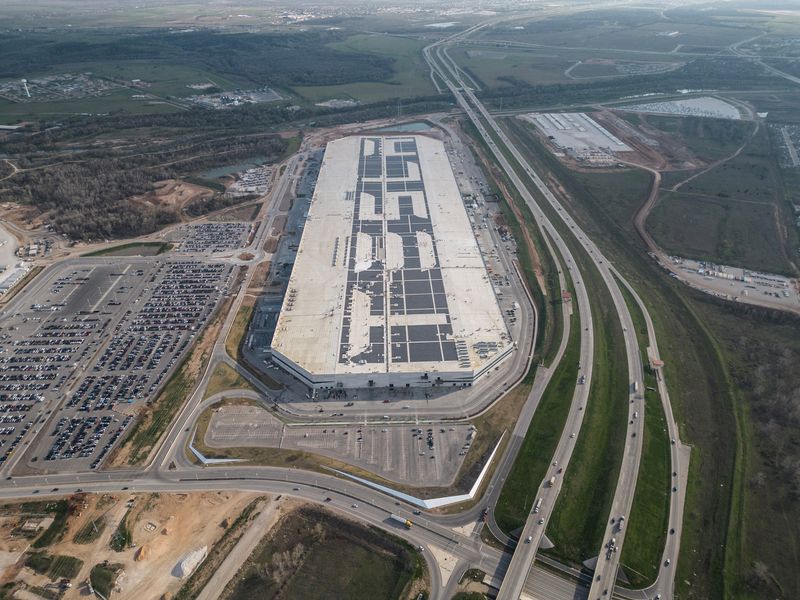Musk’s Texas Gamble: Are Robotaxis Coming Sooner Than We Think?
As Tesla accelerates toward the ambitious launch of its robotaxi service, CEO Elon Musk is setting his sights on Texas. The state’s favorable regulatory environment presents a unique opportunity to fast-track the deployment of this groundbreaking technology. But what does this mean for the future of autonomous transportation? In this article, we will explore Musk’s Texas gamble, the implications of robotaxis, and how this venture could reshape our cities and our lives.
The Vision Behind Robotaxis
Elon Musk has long been a proponent of autonomous vehicles, viewing them as a solution to many urban transportation woes. His vision for robotaxis is not just about convenience; it’s about creating a safer, more efficient transportation ecosystem. The idea is simple: a fleet of self-driving cars that can be summoned at the touch of a button, providing rideshare services without the need for human drivers.
By leveraging Tesla’s advanced AI and cutting-edge technology, Musk believes that robotaxis can significantly reduce accidents caused by human error. According to the National Highway Traffic Safety Administration, over 90% of traffic accidents are due to human mistakes. Therefore, the transition to fully autonomous vehicles could save thousands of lives annually and alleviate congestion in urban areas.
Texas: A Favorable Landscape for Innovation
Texas has emerged as a focal point for Tesla’s ambitions, largely due to its business-friendly environment. The state has actively sought to attract technology companies and has enacted legislation that encourages the development and testing of autonomous vehicles. This is evident in several key aspects:
- Regulatory Support: Texas allows for the testing of autonomous vehicles on public roads, providing a conducive environment for companies like Tesla to refine their technology.
- Infrastructure Investment: The state has been investing in smart infrastructure that can support the integration of autonomous vehicles into the existing transportation network.
- Growing Market: Texas boasts a rapidly growing population and urbanization, creating a substantial market for robotaxi services.
Challenges on the Road Ahead
While the prospects for robotaxis in Texas are promising, there are several challenges that Tesla must navigate. These include:
- Regulatory Hurdles: Despite a generally favorable environment, there are still regulatory frameworks that need to be established to ensure the safe deployment of robotaxis.
- Public Acceptance: The success of robotaxis hinges on public trust. Many consumers are still wary of autonomous technology, and overcoming this skepticism will be crucial.
- Technological Limitations: While Tesla’s software is among the most advanced in the industry, there are still technical challenges to solve before robotaxis can operate safely in various conditions.
Economic Implications of Robotaxis
The introduction of robotaxis could have profound economic implications. Here are a few potential impacts:
- Job Displacement: As autonomous vehicles become mainstream, jobs in traditional driving roles may diminish, leading to significant shifts in the labor market.
- New Opportunities: Conversely, the rise of robotaxis could create new jobs in technology, maintenance, and operations related to autonomous systems.
- Cost Savings: The operational cost of robotaxis could be lower than traditional rideshare services, leading to more affordable transportation options for consumers.
Potential Benefits of Robotaxis
The potential benefits of robotaxis extend beyond mere convenience. They include:
- Environmental Impact: Tesla’s robotaxis would likely be electric, contributing to reduced emissions and promoting sustainable urban mobility.
- Increased Accessibility: Robotaxis could provide essential transportation options for those unable to drive, such as the elderly and disabled.
- Optimized Traffic Flow: With the ability to communicate with one another and traffic management systems, robotaxis could help reduce congestion and improve travel times.
The Future of Transportation: A Paradigm Shift
Elon Musk’s Texas gamble represents a potential paradigm shift in how we think about transportation. As robotaxis inch closer to reality, a new era of mobility could emerge, characterized by:
- Seamless Integration: Robotaxis could be integrated into public transportation systems, enhancing connectivity and efficiency.
- Smart City Development: Cities may evolve to accommodate autonomous vehicles, leading to redesigns of urban landscapes and infrastructure.
- Data-Driven Insights: The data collected from robotaxis could offer insights into traffic patterns, helping city planners make informed decisions.
Conclusion: A Bright, Autonomous Future
As Tesla races toward the launch of its robotaxi service, the implications for the future of transportation are immense. Musk’s strategic choice to focus on Texas reflects a calculated gamble that could pay off in revolutionizing how we move through our cities. While challenges remain, the benefits of robotaxis—ranging from increased safety and efficiency to environmental sustainability—are undeniable.
In the coming years, we may very well witness the dawn of a new era in transportation, one where robotaxis become a common sight on our roads. As technology evolves and public perception shifts, the dream of a fully autonomous future may be closer than we think.
See more Future Tech Daily

